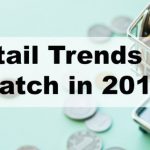Where do you draw the line between your need for data and your need to not annoy your customers and drive them away? We all know that getting your customer's data is very important today. And the point of sale is a good place to garner some of that info. But some retailers have gone too far in their on-the-spot quest for data and it's driving their customers away.
One of our account supervisors is a mom of two young boys. But she will no longer shop at Toys R Us. Why? Every trip to the cashier involves 8 – 10 questions. It starts with a simple do you need any batteries – which is helpful, to make sure you don't deliver a toy your kid won't be able to play with because it requires batteries you didn't get. But from there it goes on to email address, phone number, address and on and on. Not only does the customer feel invaded at this point, she feels her valuable time is being wasted. There's nothing a busy working mom wants less than an extra 5 minutes in line per customer for a corporate grilling. So, how do you get the info you need without losing customers?
Ask fewer questions. Retailers need to accumulate data. Especially if it's a cash transaction – how can you match the transactional data with the customer if you don't have an identifier? The answer is to keep the questions to a minimum. One or two would be best.
Offer something in return for the information. This is a good way to get customers to actually want to give you their data, especially if you're going to ask more than one or two data points. For instance, you could ask "would you like an extra 10% off today? If you give me your name, email and phone number – I can take it off your bill right now."
Ask in a different way. Another way to take the sting out is to find different ways to ask for the information. Ways that don't trigger the customer's alarm and have them start asking why you want the info. For instance, Sears and other retailers have asked me if I'd like to have my receipt emailed to me. I'm not sure what the benefit of that is (maybe saving trees & not losing your receipt), but on several occasions, I've just said automatically, "sure, why not." And then gave them my email address.
Be more transparent in why you want the information. But make sure there's a benefit for the customer in that reason. For instance, you can tell them you have special email exclusive offers that are better than any you'll find somewhere else and ask if they'd be interested in receiving them.
Offer incentives to give you the data later. A lot of the fast food chains are doing this now. The cashier tells you that on the back of the receipt, they have an online address for feedback. If you give feedback, you receive something in return. It could be something big, like an entry to win a $10,000 drawing. Or it could be something small, like a free item next time you come in – just for filling out the feedback form. The online forms are connected to the receipt via a code or the specific link address, so you can link that customer's data back to the transaction. Of course, this method relies on the customer taking the time to do it on their own later. There will be drop off compared to getting data at the point of sale, but the upside is you can get more data and have a happier customer giving it to you.
Data is important for retailers. But so are customers. Make sure you're doing your best to get the most of both without losing either. Of course, once you have the date, make sure you use it to share good stories about your brand with the right people.
Got an example of data gathering that's worked for you? We'd love to hear it!
Mike McClure, passing out data like it's candy






